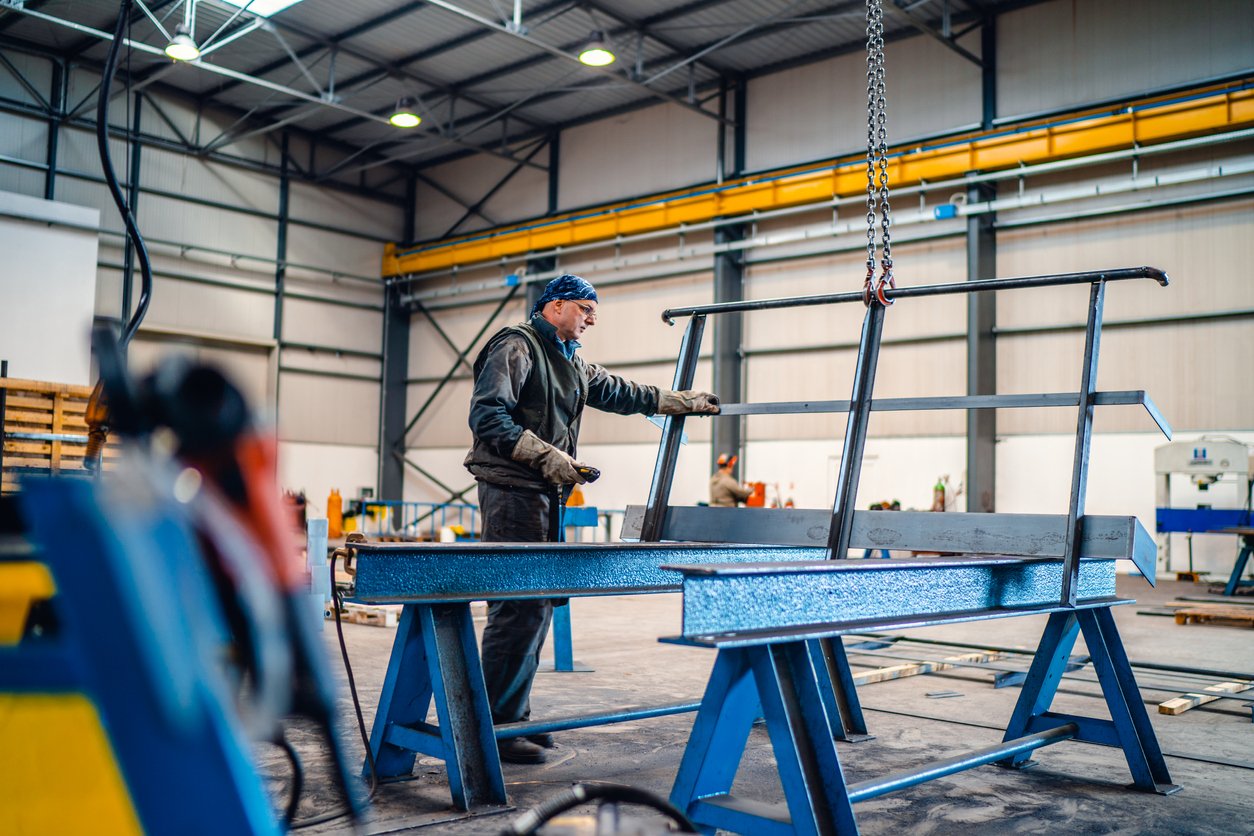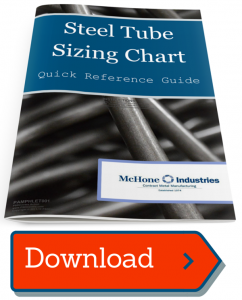
As a strong, durable, and affordable metal, carbon steel is found in plenty of applications.
From the lugnuts holding your vehicle’s tires on to beams supporting up the bridges you drive over, there’s a good chance you’ll find carbon steel.
When considering which type of steel is best for your project, carbon steel can be a bit tricky to understand. After all, all steel does contain carbon. And there are many carbon steel grades with unique qualities to choose from.
To make things easier for your evaluation, we’ve compiled a carbon steel grades chart highlighting the most commonly used carbon steel grades and their applications.
Use the information below to get the right carbon steel grade for your project.
A Guide to Carbon Steel Grade Levels
Before diving into our carbon steel grade chart, let’s first explore the different levels of this material. Selecting the right carbon steel level has big implications on your finished pieces. With the wrong level, your final product can fail when used.
An alloy comprising iron and carbon, most folks divide this steel type into four levels based on its carbon content:
- Low carbon steel (mild steel): Typically consists of 0.04% to 0.3% carbon. Depending on the properties you need, you can opt for a type with a certain element added or increased. (Ex.: In structural steel, carbon and manganese content is higher.) Low-carbon steel is found in cookware, pipelines, and fencing.
- Medium carbon steel: Generally contains between 0.31% and 0.6% carbon, plus 0.06% to 1.65% manganese. Stronger than low-carbon steel, but harder to weld, form, or cut. Often hardened and tempered via heat treatment. This level of carbon steel is used for axle shafts, train wheels, and structural support beams.
- High carbon steel: Commonly known as “carbon tool steel.” Typically has a carbon range between 0.61% and 1.5%. Very difficult to bend, weld, or cut. Once heat-treated, it becomes quite hard and brittle. Applications include cutting tools and masonry nails.
- Ultra or very high-carbon steel: Though an extremely strong metal, this material is brittle and requires special handling. It contains between 0.96% and 2.1% carbon. Through processing with alloys, ultra high-carbon steel becomes one of the most durable carbon steels on the market. It’s often used for truck springs, metal cutting tools, or knives.
To enhance strength and reduce brittleness, carbon steel pieces may include traces of other elements, such as:
- Manganese, up to a 1.65% maximum
- Silicon, up to a 0.6% maximum
- Copper, up to 0.6% maximum
Carbon Steel Grades Chart: The Most Popular Grades and Uses
Here are the most common carbon steel grades, in chart form. As some of the most popular carbon steel grades, they’re tried, trusted, and true in each of their respective applications.
|
GRADE |
TRAITS |
USES |
|
12L14 |
Free machining. Lead added to enhance machinability. Addition of lead does, however, reduce tensile strength, although it’s still generally stronger than 1018. Magnetic in all conditions. |
Brake hose ends, pulleys, gear box components, wheel nuts and inserts, disc brake pistons, padlock shackles, control linkages, garbage bin axles, concrete anchors, hydraulic fittings, vice jaws |
|
8620 |
Hard outer surface, combined with a ductile interior for higher strength. |
Gears, crankshafts, gear rings |
|
A36 |
Chemically similar to 1018 but has inferior properties and rougher finish. Most commonly available of the hot-rolled steels. Yield strength also significantly less than 1018 |
Automotive components, cams, fixtures, tanks, forgings and structural applications such as buildings or bridges |
|
A513 (alloy 1020-1026) |
Its higher carbon content means higher strength, but lower weldability and machinability. |
Drawn over mandrel tubing |
|
1008 |
Highest thermal conductivity among wrought plain carbon steels. Can have the lowest tensile strength and moderately high ductility. Excellent weldability. |
Machinery parts, tie rods, relatively low-strength structural applications, mounting plates and brackets |
|
C1010 |
Relatively low strength, but can be quenched and tempered to increase strength at a high cost. Fairly good machinability; good formability and ductility. |
Machinery parts, tie rods, relatively low-strength structural applications, mounting plates and brackets |
|
C1018 |
Most commonly available cold-rolled steel. Has strength, some ductility, and comparative ease of machining. |
Machinery parts, tie rods, relatively low strength structural applications, mounting plates and brackets |
|
C1045 |
For applications in which more strength or higher hardness than that of 1008 or 1010 is required. |
Bolts, gears, crank shafts, cylinder shafts, die forges |
|
C1141 |
For applications similar to those of 1045, but machinability is very important. |
Pins, studs, bolts, shafts, tie rods |
|
C1144 |
Higher strength than 1018 or A36, but in addition has improved ductility. Very low distortion or warping after machining due to a combination of its chemistry, method of manufacture, and heat treatment. Relatively easy to machine. |
Pins, studs, bolts, shafts, tie rods, applications similar to those of 1045 when machinability is very important |
Carbon Steel Grades Chart: Cracking the Coding
Spend any time reviewing carbon steel grades, and you’ll likely notice plenty of numbers -- just like the ones in our chart. You’re probably wondering what all those intimidating numbers mean.
Let’s dig into each digit and its meaning.
Digit 1: GENERAL GROUPING
In general, the first number of each grade depicts a general category of steels. They are:
- 1XXX: Simple carbon steel
- 4XXX: Molybdenum steel
- 5XXX: Chromium steel
- 6XXX: Chrome-vanadium steel
- 8XXX: Nickel-chromium-molybdenum steel
- 9XXX: Silicon-manganese steel
Here's a more detailed look, in chart form, at what these categories look like. You can download the full, printer-friendly PDF version here or by clicking on the image. Feel free to save it, download it, or share it with your engineering team.
Digit 2: ELEMENTAL ATTRIBUTES
The second number indicates the presence of elements that affect the steel’s traits.
For example, the zero in a 10XX grade indicates there are no major secondary elements, such as sulfur, inside. Why would this matter? Sulfur, lead, and other elements in steel can increase machinability. Yet they can also cause pockets or other faults that can hamper some applications.
Digits 3 AND 4: CARBON CONTENT
The last two characters represent the steel’s carbon content.
A piece of 1018 steel contains 0.18% carbon. Note that standards will actually show an allowable carbon range of 0.15-0.20% for this grade. That’s because it’s impossible for steel makers to control carbon and alloy contents with flawless precision.
Need More Help Optimizing Your Project?
We get it. There’s a lot to consider when choosing a material for your component -- even if price is your chief concern.
Carbon steel works beautifully for projects that need a cost-effective, yet strong and long-lasting metal.
If you’re still lost in the woods on how to maximize your company’s dollars, read up on steel costs and how they affect your supply chain.
(Editor's Note: This article was originally published in November 2017 and was recently updated.)



